Choosing a backpack for your camera is a gesture that is much more important than you think. What's more, over the years it is likely that you will change your photographic backpack several times because it is normal that if you fully immerse yourself in the world of photography, your needs will vary. And this is the key. Like everything, there is no ideal backpack, but the one that best suits your needs.
A backpack is a photographic accessory (here you can see them all) that has several functions: transport, security and protection.
And that is what we are going to talk about today, how to choose a good photographic backpack for your camera and the different types that exist.
Because... can you imagine returning half way from a photographic outing because you're so uncomfortable that all you want is to go home? That should NEVER happen and trust me, sometimes it does. But we are going to prevent it from happening to you.
Note: If you come in a hurry and want to see directly our selection of backpacks for photographers, here it is .
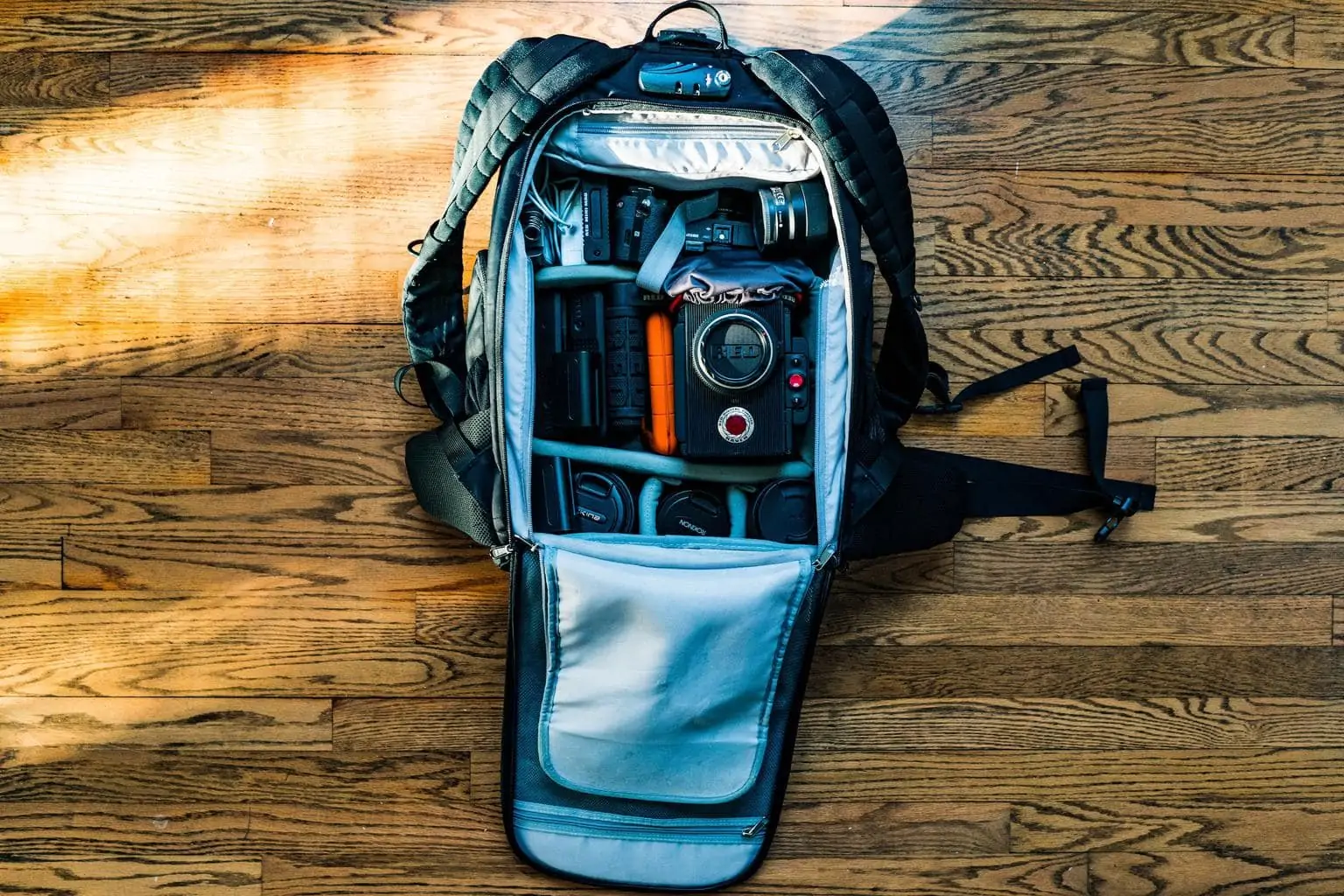
WHY IS IT SO IMPORTANT TO HAVE A GOOD BACKPACK FOR YOUR CAMERA?
Is there anything more precious to a photographer than his camera? In the material world, probably not, right? Therefore, the safer and more protected it is, the better.
A backpack or camera bag is not only a way to store and transport your equipment comfortably, but it is also the main way to protect your photographic equipment when you go out with it.
Scratches, bumps, dust, and even thieves are lurking in your gear when you're out shooting. Therefore, the more secure you feel in this regard, the calmer you will be able to take your photos.
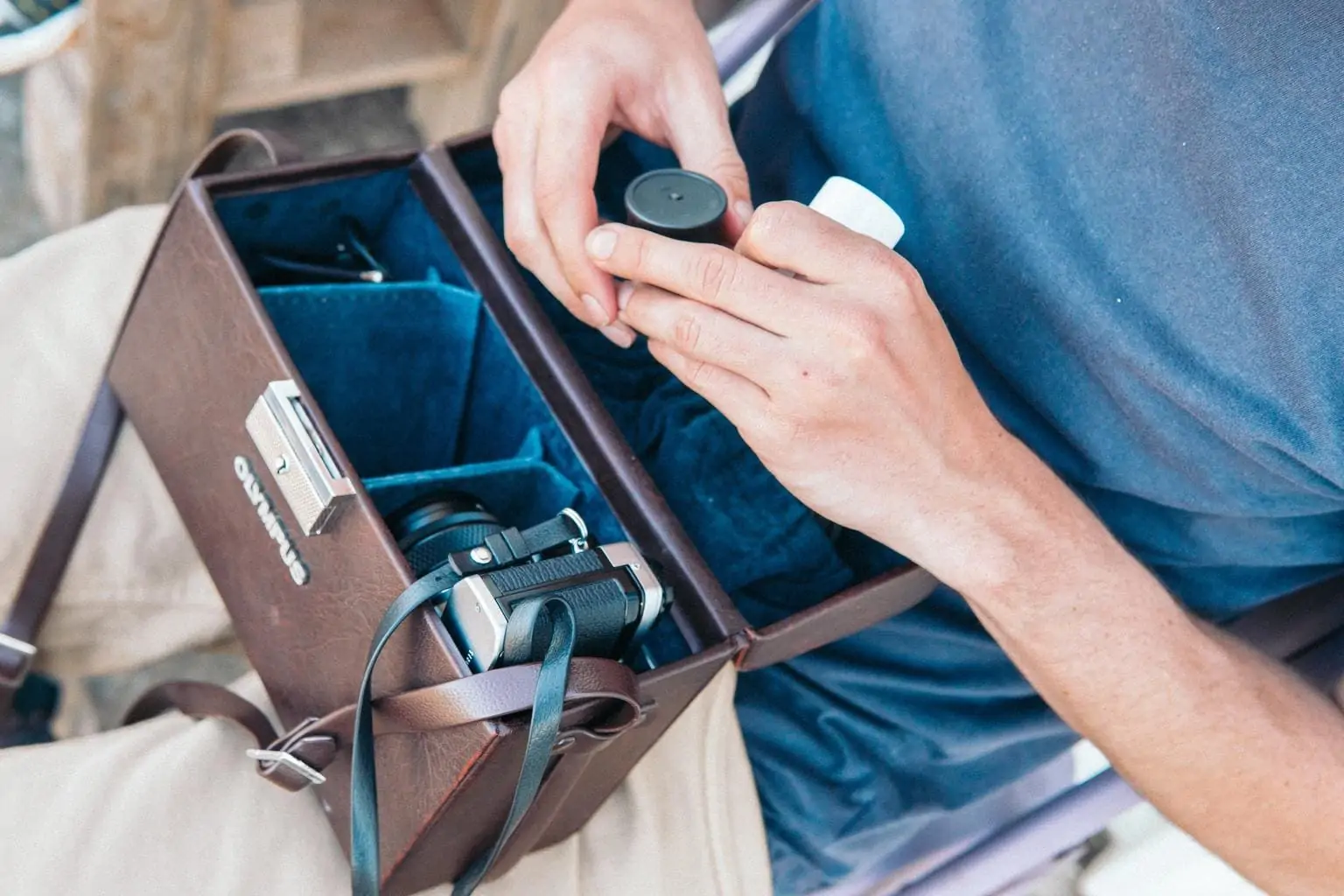
While you can use almost any bag, backpack, or shoulder bag to carry your camera and other gear, not all of them guarantee adequate protection. Backpacks specially designed for photographers are usually robust, with padded compartments and even waterproof to guarantee both comfort and safety.
HOW SHOULD A GOOD PHOTOGRAPHIC BACKPACK BE?
Whatever equipment you have, these are the minimum requirements that a backpack for your camera must meet:
- Be comfortable to wear.
- Have space to accommodate all the equipment you plan to bring to a session.
- Allow to have camera and accessories placed in an orderly manner.
- Protect the equipment well.
- Adjust to your budget.
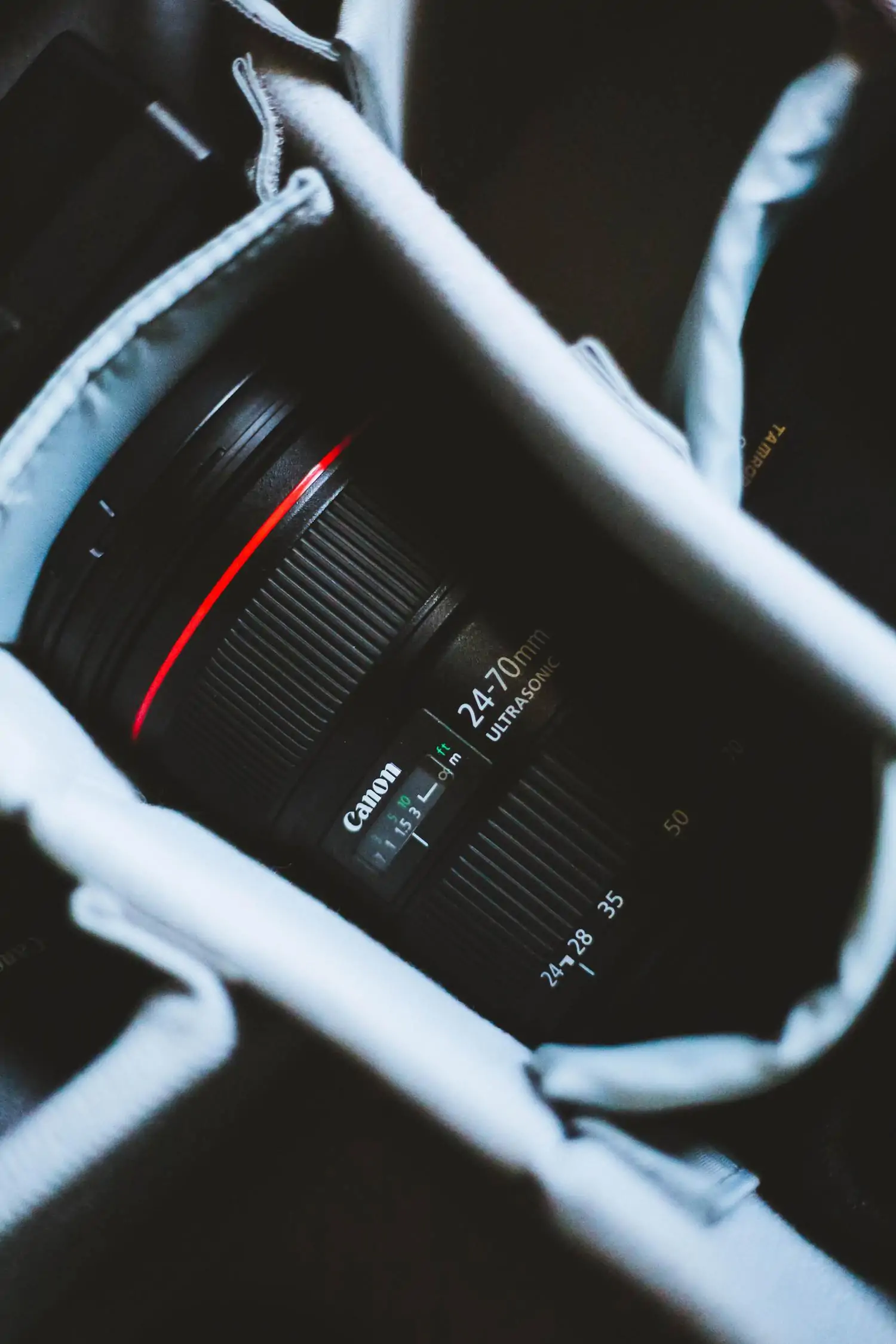
WHERE TO BUY PHOTOGRAPHIC BACKPACKS?
These are the best-known brands in terms of backpacks and photographic bags. Each of the brands that I am going to mention has a large number of different models of excellent quality covers, bags and backpacks, but keep in mind that they are not the only ones:
- lowpro
- manfrotto
- tamrac
- K&F Concept
- MOSISO
- Case Logic
- Zecti
- Vanguard
- Neewer
- duragadget
- docooler
So that you can decide on one manufacturer or another, it is important that, when reviewing the bag or backpack, you pay special attention to the quality of the seams, the zippers and the fabric with which it was made.
In the event that it appears to be of poor quality or offers little resistance, it is best to keep looking. The last thing you want is for a strap or zipper to break mid-hike, spilling all of your gear on the ground. COMPLETE CATASTROPHE!
So, to avoid the absolute drama... if you've spent a lot of money on your equipment, try not to skimp when it comes to getting a bag or backpack for your camera, since its integrity is at stake (and also that of your mental health ?).
WHAT CAMERA BACKPACK TO BUY?
Next, I have prepared a list with the aspects that you should look at if you want to succeed in choosing your next backpack for your camera:
- The use you are going to give it: it is important that you keep in mind what photographic disciplines you practice to choose a bag or backpack that suits your needs. A backpack for photographing landscapes is not the same as another for walking the streets of a city dabbling in street photography. Depending on the use you are going to give it, a cover, a shoulder bag or a backpack will be more or less useful.
- The equipment and accessories: it is not the same to carry a camera with a lens mounted on it, than to carry with the camera, a couple of lenses, a flash, a laptop, and maybe a long etcetera. The size, weight, and number of items you carry with you determines the type and size of bag or backpack you need to carry them.
- Compartments, divisions and pockets: you should pay special attention to this aspect since the quantity and quality of the pockets or compartments is what will guarantee that your equipment does not move and hit inside your bag or backpack. It is very important that each compartment firmly secure each accessory and protect it from possible bumps. Again, the number of divisions and pockets will depend on the use you are going to give it and the number of accessories you have to store. Many backpacks and bags allow, through the use of velcro, to adapt the different divisions to the size and shape of the objectives or accessories that you want to take with you. The thicker and more padded they are, the more protected the equipment will be.
- Weight of the backpack: this is another aspect that you cannot ignore since, to the weight of all the equipment, you must add the weight of the backpack or bag itself. Contrary to what it seems, photographic backpacks can become very heavy on their own, since the materials with which they are made add a lot of extra weight. Your back and shoulders will thank you for taking them into account at the time of your choice.
- Security: almost nowhere in the world will you get rid of the fact that the friends of others can open your bag or backpack and take something that does not belong to them. And in some places the problem is compounded. The easier it is to open, the greater the chances that something will fall out or be stolen. Keep in mind that some backpacks have security closures or pockets that are difficult to access for valuables. Also make sure that it is not too striking if you are going to move through unsafe places. Being cautious never hurts. And, speaking of camera thefts, I recommend that you read this article with tips to avoid them.
- Comfort: I have to insist on the fact that the more comfortable you are when taking your photographs, the better results you will achieve. I have ever lived it. If you're worried about how heavy your backpack is or about that strap that sticks into you, for example, it's hard for you to concentrate on what's important, which is nothing more than taking photos. And let's not say if you need 8 minutes to open the backpack and change the lens, thus losing the photo of the day. Total drama! That is why you must ensure that the backpack is not a hindrance or an impediment. Finding a comfortable, light, resistant and safe bag is very complicated, but finding a balance between all these characteristics is not so difficult if you are clear about your needs.
- Strength and Durability: As we've discussed, the last thing you want is while you're out on a photo walk for a strap or zipper to snap and all your gear ends up scattered on the floor. OMG!!!! Or that if it rains... your camera gets wet. Not! We don't want that! For this reason, the resistance and durability of the materials with which they are made, the quality of the zippers and seams, etc., is essential to prevent your camera, lenses and accessories from going to waste. Keep in mind that there are backpacks designed to go on adventures that are more resistant and waterproof than those that were designed for more everyday and less extreme use.
- Fabrics: in addition to the resistance of the fabrics, check if they are breathable, for example in the handles and in the back area. In very hot places, hanging around all day with a backpack on your back, I assure you, it can be an ordeal. Luckily, some backpacks have special fabrics on the back (thank you manufacturers who think of everything).
- Style: Although aesthetics has nothing to do with safety or comfort, it may be important to you. If you are one of those people, don't worry, there are endless designs to choose from, from more functional to designer or vintage-style bags. Also, with a little imagination you can easily build your own. How? Reading the following article: “ DIY photography: How to Assemble Homemade Photographic Accessories ”.
- Color: although it may seem to you that it has to do with style, in this case I am not referring to the aesthetic part, but to cleanliness. Be careful with very light or very dirty colors. Especially if your idea is to go with your backpack on your back through the mountains, on a trip, etc. Another reason is to go more or less unnoticed, and not only because of the thefts that we have already talked about, but also because of camouflage in nature, for example, when photographing birds or wildlife. A very loud color would not be the most appropriate if you expect to be successful in your session.
- The price: all the aspects that you have just read are conditioned by the latter: the price. The best way to save money when buying a bag or backpack is by carefully analyzing what use you are going to give it, so as not to pay for features that you will never use. If you do not plan to go on an adventure, there is no point in spending a fortune on a bag for that purpose. Now, once you have defined this aspect, try not to skimp on expenses. The cost of a quality backpack is rather an investment, in safety for your equipment and in quality for your photographs, since it will allow you to work more comfortably and relaxed.
Now that you know what the different alternatives available on the market are, which are the main manufacturers and how to choose yours, surely you have already got an idea of the type of bag you need. If not, and you have doubts, I recommend that you answer (in writing) these questions before continuing:
- What use will you give?
- What equipment do you have?
- Do you usually carry a tripod?
- Is your equipment, besides being bulky, is it very heavy?
- Do you travel with your equipment by plane or in any other form of transport where you have to lose sight of it?
- Are you going to give it a professional use with photo sessions abroad, weddings, etc.? Or will it be more for sporadic use for pure hobby?
- In addition to the camera, lenses, etc., do you have to include lighting equipment?
- Do you move through places where security is conspicuous by its absence?
- Do you need to camouflage yourself or go unnoticed?
- What style of backpack or bag do you like?
- What budget do you have?
TYPES OF PHOTOGRAPHIC BAGS AND BACKPACKS AND RECOMMENDATIONS
Once you are more or less clear about the previous points, you can decide what type of bag or backpack interests you the most. I have prepared a short summary for you with the main options to choose from and, to make it even easier for you, recommendations for each of them.
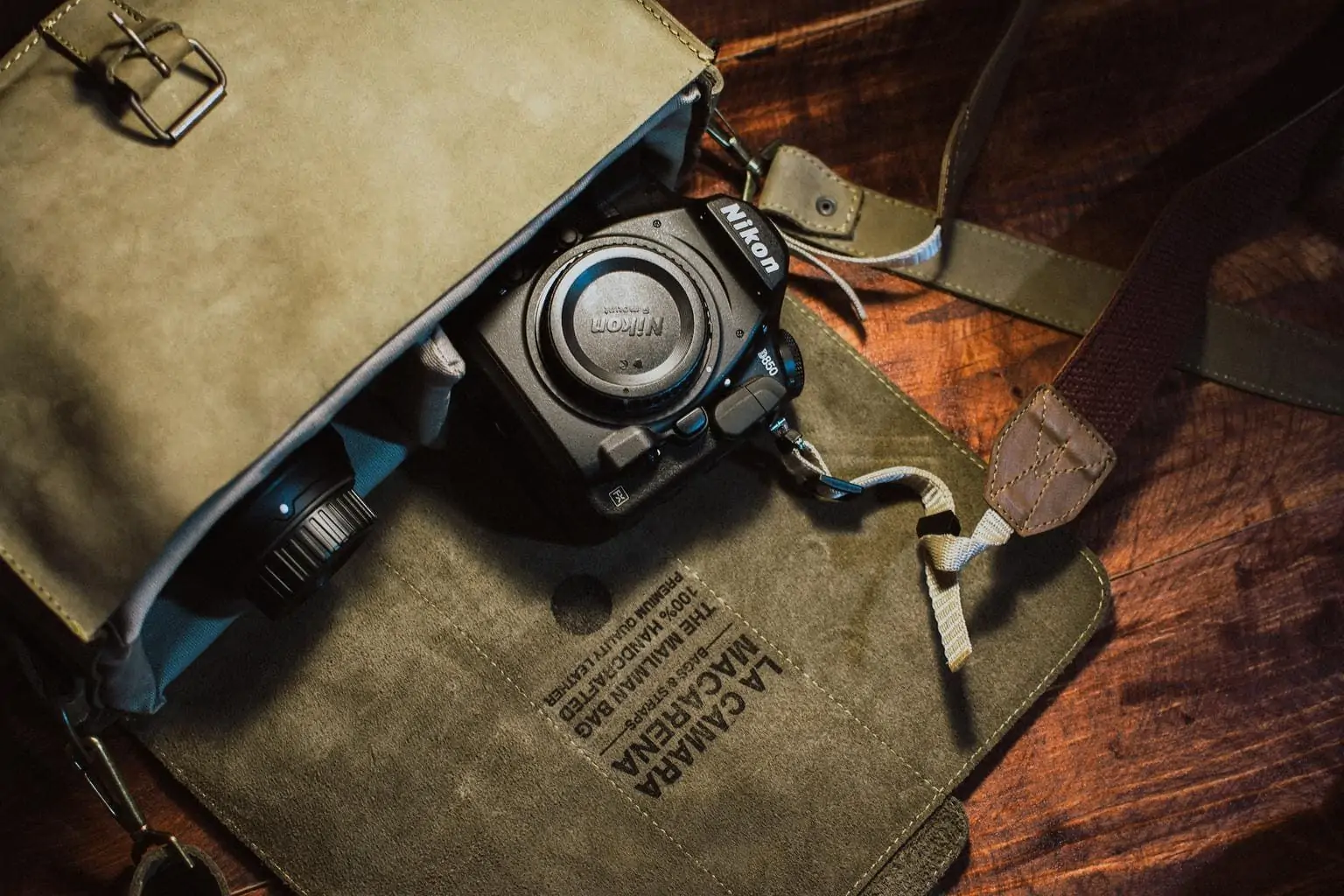
1. CAMERA CASE
The covers are a very good option when moving and protecting your camera. Its size does not allow you to store anything more than a camera with its lens, a memory card and the occasional cable, but if you are looking to carry little weight with you, they are a good choice.
Its main advantage is that you can quickly take out your camera to capture an instant. It is also an advantage that it allows you to store the camera inside a normal backpack with more things inside that have nothing to do with photography.
Ideal for very compact cameras or when you go on an excursion with friends or family and you take the minimum equipment (camera+lens+card+battery) because it is impossible for you to leave the camera at home, does it ring true?
We talk more in depth about the advantages and disadvantages of a camera case in this article , as well as including some purchase options, although I will also leave you with some recommendations for cases below.
2. SHOULDER BAG
These types of shoulder bags are larger than the covers and there are different sizes. They allow you to transport your camera with the occasional extra lens and its corresponding accessories.
A shoulder bag should have enough padding to protect your camera, dividers to keep your gear organized, and pockets to hold smaller gear like batteries or cards.
Their shape and size vary depending on the manufacturer, but almost all of them have something in common: the possibility of carrying your equipment hanging from one of your shoulders in a practical and safe way.
The advantage is that they allow easy and quick access to the equipment.
The drawback is that by placing all the weight on one shoulder, they can cause fatigue and back pain, so I don't recommend carrying it a lot.
Ideal for short days or when you do not have to walk with it hanging. For example, a portrait session, where the locations are more or less centralized in the same place.
The smaller ones are also ideal for street photography where, at most, you carry a spare pancake lens, batteries and cards.
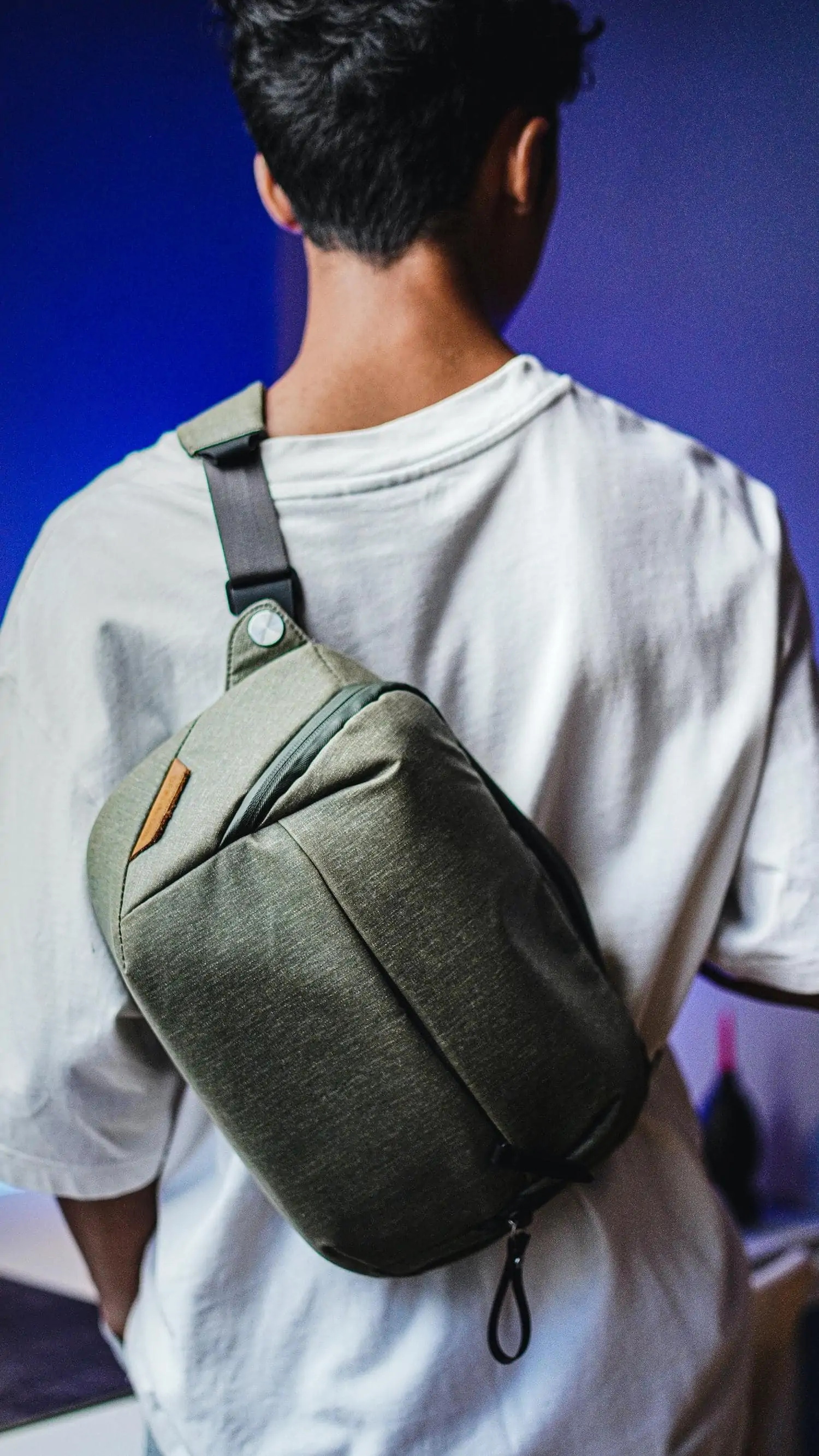
3. SHOULDER BAG FOR THE CAMERA
These backpacks are halfway between a shoulder bag and a backpack for your photo camera and seem to combine the best of both: a great way to transport your equipment and the comfort to access it without having to remove it from your back (it can be broken easily).
Unlike regular backpacks that have two handles so you can spread the weight between both shoulders, these shoulder bags have a single strap that will cross your chest.
Ideal when the security of the environment is conspicuous by its absence, since you can take it forward and have it more controlled.
4. BACKPACK FOR CAMERA AND PHOTOGRAPHIC EQUIPMENT
Backpacks are the ideal way to transport not only your camera but also the most complete equipment (one or two cameras, different lenses and various accessories) in a safe, practical and comfortable way.
A larger size compared to bags and shoulder bags allows you to store all the accessories you may need. Although you can use almost any backpack for this purpose, those specially designed for photography, as they come padded, with divisions and some are even waterproof, allow you to do it in a safer and more comfortable way.
Its two straps distribute all the weight in a more balanced way, so they are ideal for long days of work or adventures.
Its main disadvantage: if you want to take out your camera or any accessory, you will have to remove it from your back.
Ideal for landscape, nature or traveling photographers.
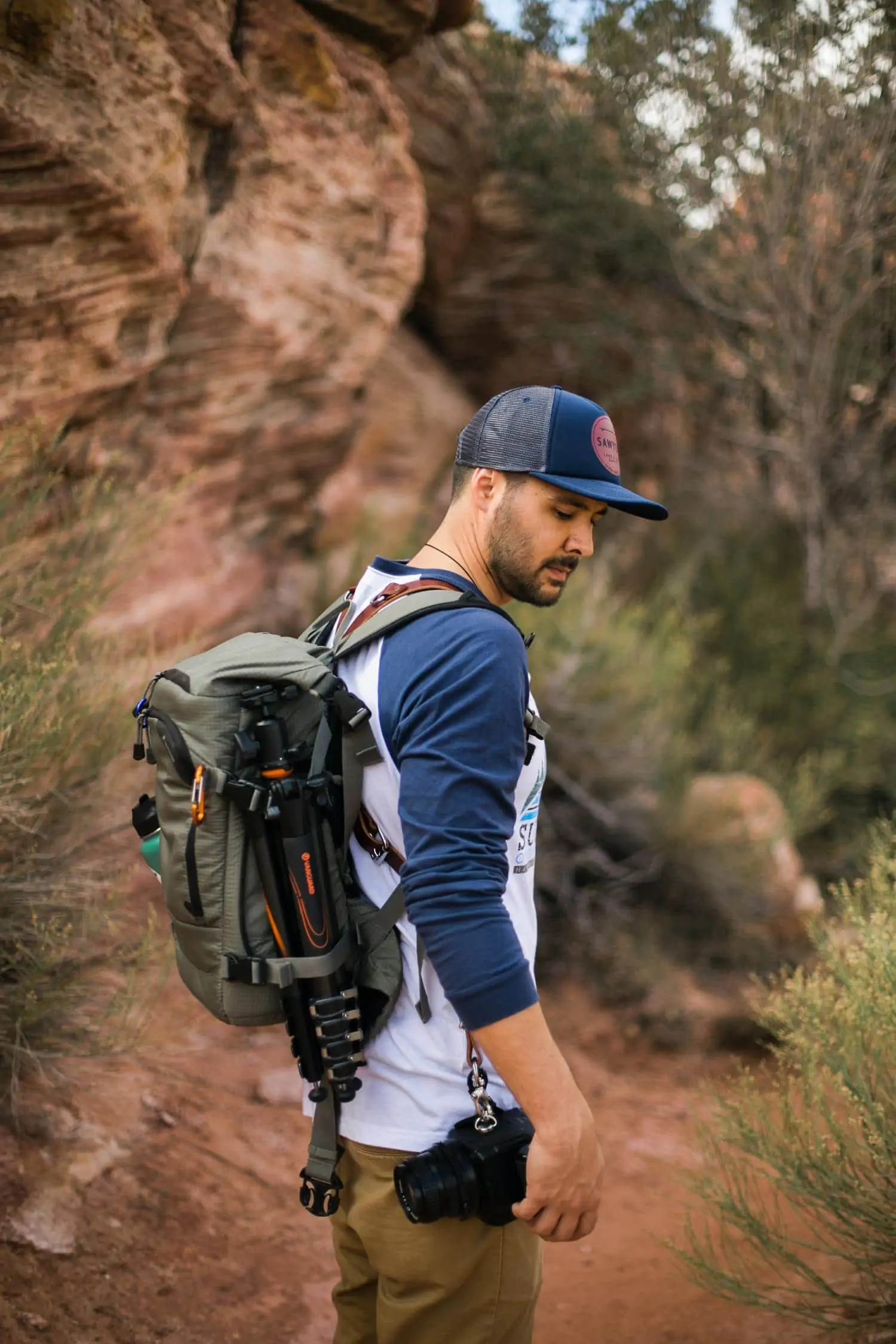
5. MOCHILAS PARA CÁMARA DE FOTOS CON RUEDAS
Las mochilas con ruedas se pueden usar como mochila o como maleta. Son prácticas y cómodas para viajar y/o para llevar mucho peso.
La ventaja es que puedes utilizar las ruedas para desplazarla. El inconveniente es que son menos ligeras.
Están más pensadas para fotógrafos avanzados o profesionales. También para fotógrafos viajeros o viajeros fotógrafos ;P
WHAT TO CARRY IN A PHOTOGRAPHIC BACKPACK?
It seems important to me that you take into account what you should carry in your photographic backpack . In the link article we tell you.
And on this subject, one last piece of advice before saying goodbye. Beware of the "in case" . Having space is sometimes very tempting and makes us throw in extra material just-in-case . So that this does not happen to you and back pain takes its toll, please plan your outings well. Make a list of what you really need and put that (only) in the bag or backpack.

![PHOTOGRAPHIC BACKPACK: COMPLETE GUIDE 2023 [TOP RECOMMENDATIONS]](https://photographychef.com/wp-content/uploads/2023/01/PHOTOGRAPHIC-BACKPACK.jpg)
